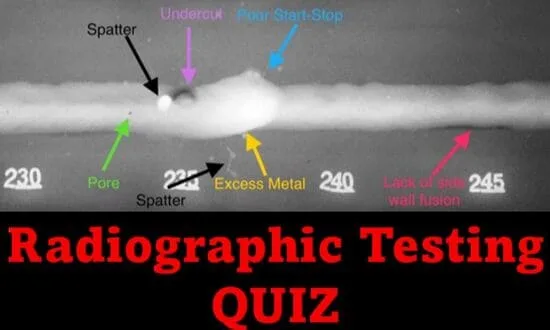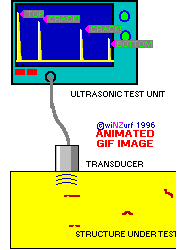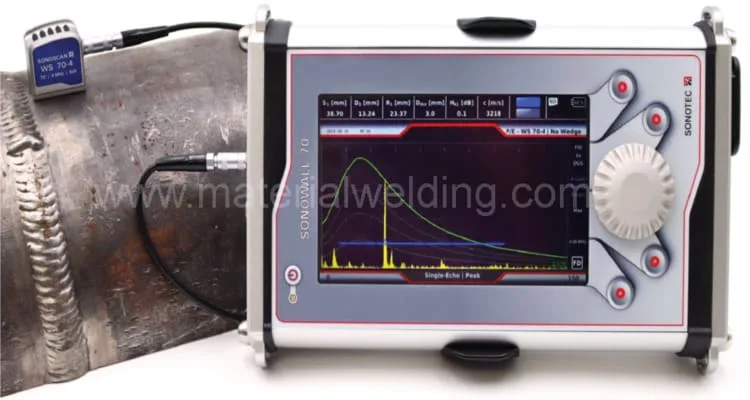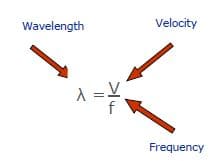Ultrasonic Testing (UT) Quiz
Test your knowledge of Ultrasonic Testing (UT), a widely used method in the nondestructive testing of materials for hidden or concealed discontinuities and internal imperfections. Take this quiz to assess your familiarity with the concepts and techniques used in UT inspection.
| No. | Question | Option A | Option B | Option C | Option D |
|---|---|---|---|---|---|
| 1 | What is the main principle of ultrasonic testing? | Eddy current | Magnetic particle | Acoustic waves | Radiography |
| 2 | Which frequency range is typically used in ultrasonic testing? | 1 kHz – 10 kHz | 20 kHz – 100 kHz | 500 kHz – 5 MHz | 10 MHz – 100 MHz |
| 3 | What is the primary purpose of a couplant in ultrasonic testing? | Improve signal strength | Reduce surface noise | Increase test speed | Provide good acoustic coupling |
| 4 | What type of wave is typically used for ultrasonic testing of welds? | Longitudinal wave | Transverse wave | Surface wave | Lamb wave |
| 5 | What is the main advantage of phased array ultrasonic testing (PAUT) over conventional UT? | Higher resolution | Easier setup | Faster testing | Lower cost |
| 6 | What is the purpose of the time-of-flight diffraction (TOFD) technique in ultrasonic testing? | Characterizing defects | Measuring thickness | Identifying material type | Detecting corrosion |
| 7 | Which ultrasonic testing method is most suitable for detecting surface-breaking defects? | Pulse-echo | Through-transmission | Surface wave | Resonance |
| 8 | Which type of transducer is most commonly used in ultrasonic testing? | Piezoelectric | Electromagnetic | Capacitive | Optical |
| 9 | What is a key limitation of ultrasonic testing? | Cannot detect small defects | Limited to metallic materials | Requires direct contact | Sensitive to surface conditions |
| 10 | What is the main purpose of angle beam testing in ultrasonic inspection? | Detection of transverse defects | Detection of longitudinal defects | Detection of surface-breaking defects | Measuring material thickness |
| 11 | Which of the following factors affects the velocity of ultrasonic waves in a material? | Temperature | Pressure | Humidity | All of the above |
| 12 | What is the purpose of a reference block in ultrasonic testing? | Calibration | Defect sizing | Signal amplification | Couplant application |
| 13 | What is the main disadvantage of through-transmission ultrasonic testing? | Insensitivity to surface defects | Difficulty in defect sizing | High signal attenuation | Complex setup |
| 14 | In ultrasonic testing, a higher frequency transducer generally provides: | Lower resolution | Greater penetration | Smaller near-surface dead zone | Better signal-to-noise ratio |
| 15 | What is the purpose of a delay line in ultrasonic testing? | Increase test speed | Improve signal-to-noise ratio | Protect the transducer | Reduce signal attenuation |
| 16 | In ultrasonic testing, which of the following materials typically has the highest acoustic impedance? | Air | Water | Steel | Rubber |
| 17 | Which of the following is NOT a typical application of ultrasonic testing? | Material identification | Weld inspection | Thickness measurement | Crack detection |
| 18 | The term “attenuation” in ultrasonic testing refers to: | Signal loss | Signal amplification | Signal distortion | Signal reflection |
| 19 | Which of the following is a common technique used to improve the signal-to-noise ratio in ultrasonic testing? | Increasing transducer frequency | Decreasing test speed | Using a smaller transducer | Averaging multiple measurements |
| 20 | In ultrasonic testing, which of the following waves has the highest velocity in a solid material? | Longitudinal wave | Transverse wave | Surface wave | Lamb wave |
| 21 | What is the main advantage of immersion ultrasonic testing over contact testing? | Improved coupling | Faster testing | Lower cost | Easier setup |
| 22 | Which of the following is an advantage of using a dual-element transducer in ultrasonic testing? | Better resolution | Improved coupling | Reduced near-surface dead zone | Increased sensitivity to small defects |
| 23 | In ultrasonic testing, the term “near zone” refers to: | The region closest to the transducer where the sound field is highly focused | The region furthest from the transducer where the sound field is dispersed | The region where the signal amplitude is highest | The region where signal-to-noise ratio is lowest |
| 24 | What is the primary function of a backing material in an ultrasonic transducer? | Damping the transducer vibrations | Increasing the transducer sensitivity | Protecting the transducer from damage | Enhancing the acoustic coupling between the transducer and the test material |
| 25 | In ultrasonic testing, the term “amplitude” typically refers to: | The height of the ultrasonic signal | The frequency of the ultrasonic signal | The duration of the ultrasonic signal | The velocity of the ultrasonic signal |
- C
- C
- D
- A
- A
- A
- C
- A
- D
- A
- D
- A
- A
- C
- C
- C
- A
- A
- D
- A
- A
- C
- A
- A
- A








